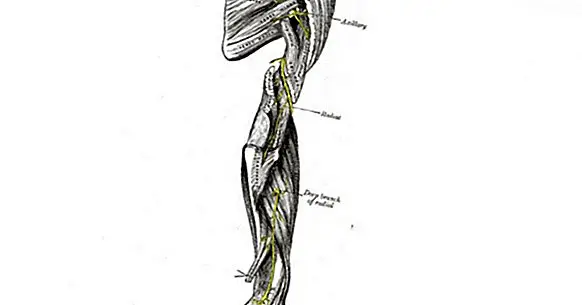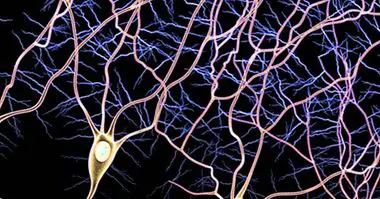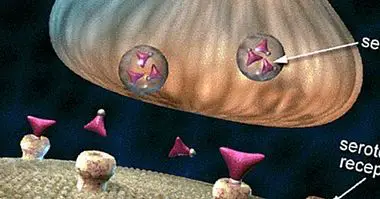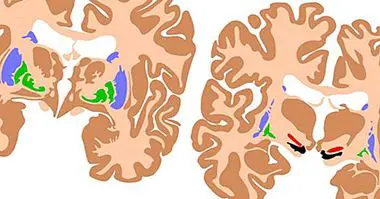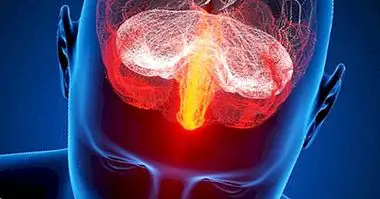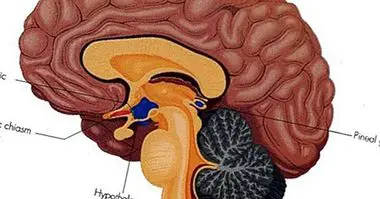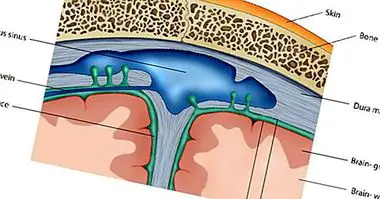Radial nerve: what it is, where it passes, and functions
Greets. Fold the wrist. Extend your fingers. You probably could have done it easily. And that's because your brain has sent the relevant information to the arm, wrist and hand muscles for it. This transmission has been carried out thanks to a series of nerves, which connect the rest of the nervous system with the muscles. One of them, of great importance for the movement and sensitivity of the extremities, is the radial nerve . It is on this nerve that we are going to talk about next.
- Related article: "Parts of the Nervous System: functions and anatomical structures"
The radial nerve: description and location
Radial nerve is one of the most important bundles of nerve fibers in the control of the upper extremities. a peripheral nerve of the autonomic nervous system .
It is one of the three main nerves that innervate the upper extremities, together with the ulnar and middle nerves .
The radial nerve supplies muscles as relevant as the triceps or the anconeus, or the brachial and brachioradial muscles. Also, among others, the extensors of the fingers, including the index and the thumb. It is therefore a nerve of great relevance for the human being. But not only that, but it also has connections with the cutaneous nerves and allows sensitivity and tactile perception in the area it innervates.
- Maybe you're interested: "Cranial nerves: the 12 nerves that come out of the brain"
Areas where it passes and its two main branches
The nerve in question born in the brachial plexus, just behind the axillary artery . After it proceeds to go through the armpit and then down the arm and forearm, hands and fingers. We must also bear in mind that there are two radial nerves, one in each of the halves of the body.
It passes through the anterior compartment of the arm, passing around the spiral groove of the humerus (whose rupture could affect the nerve) and after that it crosses the elbow and reaches the forearm, where it will be divided into a superficial and a deep branch.
The deep branch passes through the supinator muscle, entering the forearm and reaching the wrist through the back. This branch is linked to muscle perception and the capacity of tension and extension of innervated muscles.
The superficial branch of the radial nerve acts at the level of the skin, affecting the sensibility of the upper extremities . This is subdivided into three cutaneous nerves: posterior arm, posterior forearm and lateral arm. It also comes to hand. This branch allows the cutaneous perception of the back part of the forearm, the upper arm, the back of the hand and the first four fingers.
Functions of this nerve
Our arms and especially our hands are fundamental elements for the human being because thanks to them we can develop a great amount of activities, from defending ourselves or eating to elaborate complex instruments and technologies. Its control is therefore of great importance.
The functions of the radial nerve in this sense are very broad, and it highlights the interesting fact that it plays a role both in sensory perception and in motor control .
At the sensory level, it allows sensibility and perception of the back part of the arm and the forearm, including elbows and wrists, as well as part of the hand (specifically, allows sensitivity of the back of the hand) and a large part of the fingers (except little finger and part of the ring).
At motor level it allows the extension of the fingers, the wrist and the arm. Its action is especially relevant in the posterior forearm , by innervating the muscles of the posterior compartment (which allows extending the wrist and fingers) the upper arm (when innervating the triceps brachii).
Injuries in the radial
Seen in a general way the functions of this nerve, it can be easy to guess the effects that your injury can have: the loss of sensitivity in much of the posterior area of the arm, on the back of the hand and even in the fingers and the loss of the city to make a lot of movements .
If this nerve is injured at the level of the axilla, the ability to extend the arm, wrist or fingers is lost, with the triceps and the rest of the muscles remaining paralyzed, as well as the non-tactile perception of a large part of the arm and the back of the hand.
In the case that the injury is at the level of the humerus, there will be a decrease in the strength of the triceps and the wrist and fingers will stop being able to spread and the perception of the back of the hand, wrist and back of the forearm will disappear. It also generates the so-called wrist fall, which results in loss of coordination and difficulties in closing the hand.
If the injury occurs at the level of the superficial branch, the movement capacity of the entire area will remain intact, but the sensitivity of the wrist, hand and fingers will be lost.
These alterations can occur due to a large number of factors, and can occur good for lacerations and injuries, pinching or myelination problems . Examples of elements that can cause them are neuropathies such as diabetic, fractures of the humerus or radius, dislocations, intoxication, pressure on the wrist, continued enchantment and lack of movement or inflammation.
Bibliographic references:
- Brazis, P., Biller, J. & Masdeu, J. (Eds) (2007). Peripheral Nerves. In: Localization in Clinical Neurology: 27-72. Philadelphia: Lippincott Williams & Wilkins.
- Ricci, F.P., Barbosa, R.I., Elui, V.M., Barbieri, C.H., Mazzer, N. & Fonseca, M.C. (2015). Radial nerve injury associated with humeral shaft fracture: a retrospective study. Acta Ortop Bras, 23 (1): 19-21.

